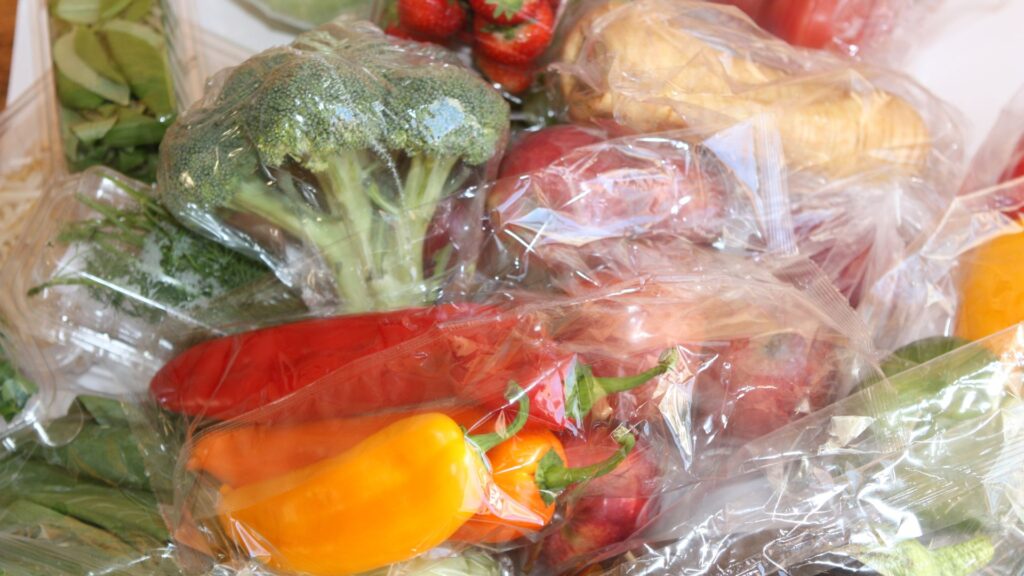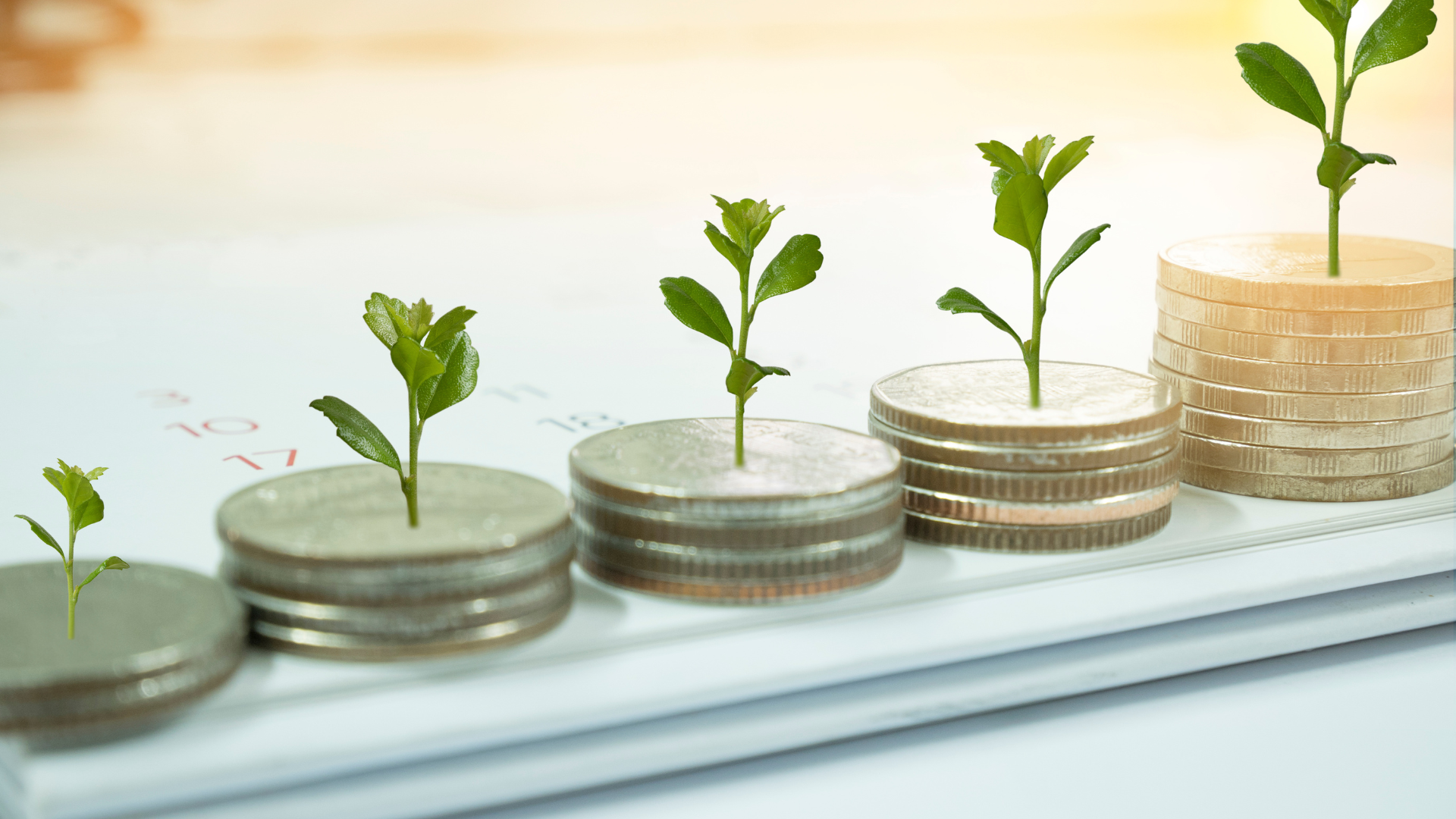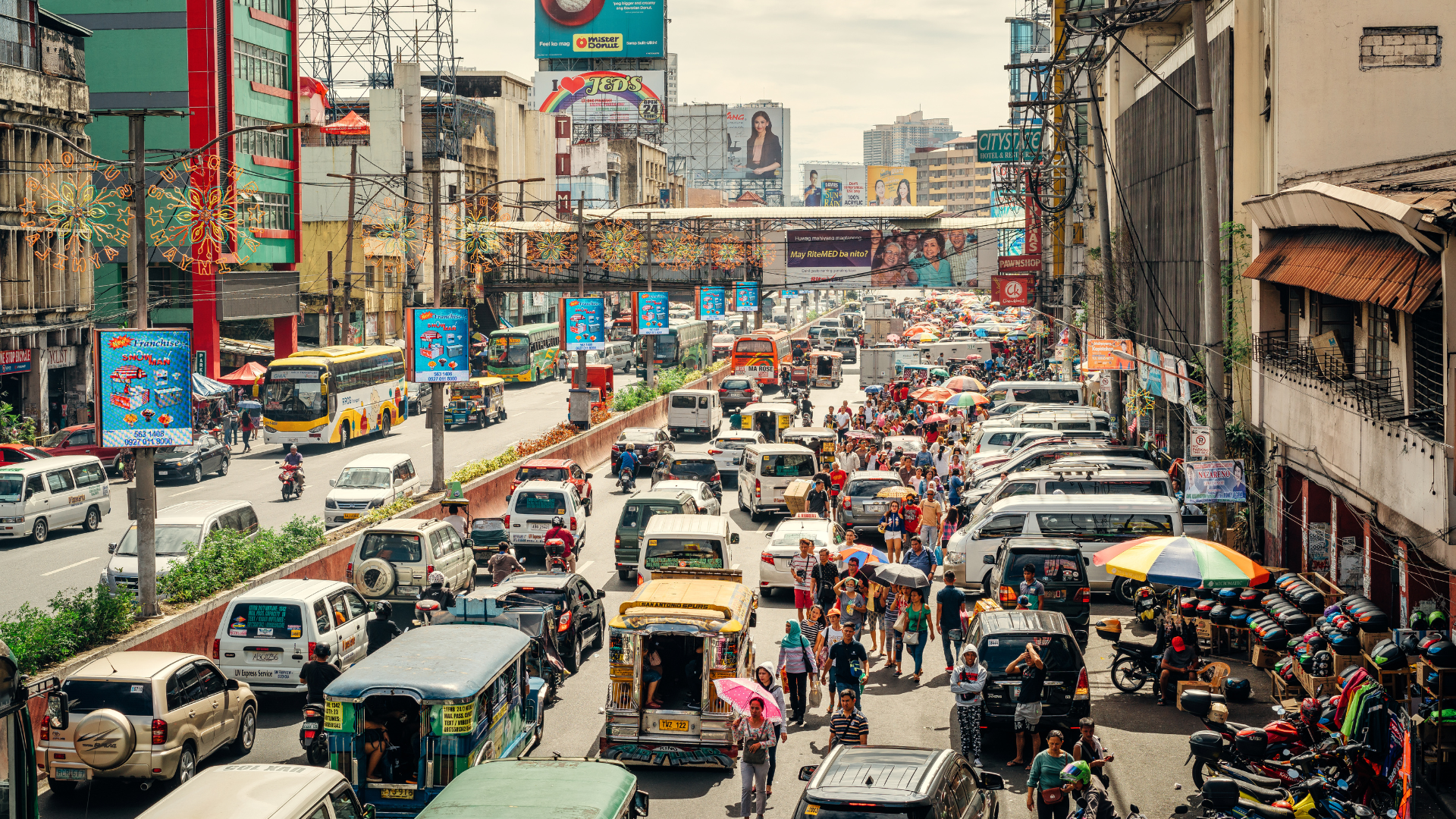The CPG industry's heavy reliance on plastic packaging, offering convenience and product preservation, has significantly contributed to the urgent global plastic crisis. From production to disposal, plastic packaging's environmental impact is severe, with fossil fuel consumption, greenhouse gas emissions, and ocean pollution being key concerns. The industry's over-reliance on single-use plastics, driven by convenience, exacerbates the issue, contributing to waste and a larger carbon footprint.
The consequences of this environmental disaster are far-reaching, imperiling the health and well-being of the entire community. As the world grapples with climate change, pollution, and habitat destruction, we must reduce plastic packaging film and adopt innovative solutions that balance consumer needs with environmental stewardship.

The Plastic Packaging Paradox: A Multifaceted Problem
Before fully appreciating the potential of edible packaging, it’s essential to understand the problems associated with current plastic food packaging films. The issues extend beyond environmental concerns, touching on economic, health, and societal aspects.
- Environmental Consequences: The widespread use of plastic food packaging films has severe environmental repercussions. Non-biodegradable and petroleum-based materials contribute to a perpetual accumulation of waste, which has persisted in the environment for centuries. This perpetuation of garbage profoundly impacts the environment, depleting natural resources and hindering ecological balance.
- Resource Depletion and Recycling Challenges: The production of plastic films relies heavily on finite fossil fuel resources, making it unsustainable in the long term. Moreover, the recycling of plastic films is often hindered by contamination, mixed materials, and inadequate infrastructure, rendering it a futile endeavor.
- Health Concerns: The potential health implications of plastic food packaging are increasingly concerning. Plastic packaging can release chemicals into food when exposed to heat or acidic contents. Furthermore, certain plasticizers used in food packaging have been linked to hormonal disruptions in humans and animals, posing significant health risks.
- Consumer Awareness and Expectations: As consumers, we drive the shift towards sustainable packaging. Your increasing awareness of the environmental and health implications of plastic packaging is driving the demand for more sustainable and eco-friendly options. This shift in consumer perception poses a significant challenge for brands that rely heavily on plastic packaging, but it also empowers you to make a difference.
- Regulatory Pressure and Accountability: Governments worldwide are implementing stricter regulations on single-use plastics, including food packaging films. This regulatory landscape creates uncertainty and potential cost increases for food manufacturers, who must adapt to these new standards to remain competitive.
- Functional Limitations and Opportunities: Plastic films offer excellent barrier properties but have limitations, including breathability and customization. As consumers demand more sustainable packaging options, manufacturers must explore innovative solutions that balance functionality with environmental sustainability.
Plastic Pollution: Time to Detox
The rapid growth of the global food industry has led to an unprecedented demand for food packaging, with plastic packaging films being the primary solution. However, the widespread use of plastic packaging films has spawned a significant environmental concern, with plastic waste and pollution becoming a major threat to our planet's health. One such approach, developing edible films, offers a hopeful and groundbreaking way to replace traditional plastic packaging films. By leveraging the properties of natural polymers and biodegradable materials, edible films can provide a protective barrier for food products while minimizing waste and environmental harm. We will explore the pressing need for innovation in food packaging and how edible films can help overcome the challenges associated with traditional plastic packaging films, ultimately helping to safeguard our planet's resources for future generations.
What is Edible Packaging Film?
As the name suggests, edible packaging film comprises consumable materials derived from natural, food-grade sources. These materials are processed and transformed into flexible film to wrap or encase food products. This innovative approach replaces traditional petroleum-based polymers with biodegradable and edible substances like polysaccharides, proteins, and lipids. Edible packaging offers a dual benefit: reducing plastic waste and providing an additional food source.
Market Growth and Regional Trends
The edible packaging industry is expanding significantly, fueled by rising environmental awareness and a growing demand for sustainable solutions.
According to Fortune Business Insights, the global edible packaging market is projected to reach USD 1,193.98 million by 2032, exhibiting a CAGR of 6.02% from 2023 to 2032. Europe currently dominates the market, followed by North America. These regions are at the forefront of adopting sustainable packaging solutions due to stringent environmental regulations and a growing eco-conscious consumer base.
The Edible Packaging Revolution: Innovations and Benefits
The edible packaging industry is experiencing a rapid transformation driven by innovative solutions and sustainable materials. The trend is shifting towards developing bio-based, biodegradable, and nutritious packaging that reduces waste and enhances the consumer experience.
Breakthroughs in Edible Packaging – Several groundbreaking technologies are emerging in the edible packaging space:
- Biofortified Materials: Scientists use renewable resources like algae, plant-based films, and seaweed to create edible packaging with enhanced nutritional value and barrier properties.
- 3D-Printed Packaging: 3D printing technology is being leveraged to create customized edible packaging from potato starch, seaweed, and milk proteins.
- Composite Edible Films: Researchers combine natural polymers to create composite materials with improved strength, barrier properties, and functionality.
Natural Materials for Edible Packaging- Several sustainable materials are being explored for edible packaging applications:
- Seaweed-Based Films: Offering biodegradability, nutritional value, and potential health benefits, seaweed-based films are gaining traction.
- Milk Protein Films: Casein, a milk protein, has demonstrated excellent barrier properties, making it a promising material for edible packaging.
- Starch-Based Films: Derived from plant sources, starch-based films provide a renewable and biodegradable option for packaging applications.
- Chitosan Films: Produced from crustacean shells, chitosan offers antimicrobial properties, making it suitable for food packaging.
- Plant-Based Coatings: Innovative spray coatings derived from plants can extend the shelf life while providing an edible protective layer.
Benefits of Edible Packaging
Edible packaging offers a groundbreaking alternative to conventional plastic packaging. It minimizes waste and aligns with consumer preferences for sustainable products. It can package food products, from snacks and confectionery to fresh produce and ready-to-eat meals.
Environmental Benefits:
- Waste Reduction: Edible packaging eliminates the need for single-use plastic packaging, significantly reducing plastic waste entering the environment.
- Biodegradability: Using natural, biodegradable materials, edible packaging decomposes naturally without leaving harmful residues.
- Reduced Carbon Footprint: Edible packaging often requires less energy than traditional plastic packaging.
Consumer Benefits:
- Novelty and Appeal: Edible packaging offers a unique and engaging consumer experience.
- Enhanced Nutrition: Edible packaging can be fortified with vitamins, minerals, or other beneficial nutrients.
- Reduced Packaging Waste: Consumers can enjoy their products without the guilt of generating unnecessary waste.
Functional Benefits:
- Improved Product Protection: Certain edible packaging materials possess inherent antimicrobial and barrier properties.
- Sensory Enhancement: The texture or flavor of edible packaging can complement the enclosed food.
|
Criteria
|
Plastic Packaging Film
|
Edible Food Packaging Film
|
|---|---|---|
|
Material Composition
|
Petroleum-based polymers (polyethylene, polypropylene, etc.)
|
Bio-based polymers (starch, protein, cellulose), edible materials (wax, seaweed)
|
|
Barrier Properties
|
High barrier to moisture, oxygen, and grease
|
Varying barrier properties depending on the material, often lower than plastic
|
|
Biodegradability
|
Non-biodegradable
|
Biodegradable under specific conditions
|
|
Composability
|
Not compostable
|
Compostable in industrial or home composting conditions
|
|
Recyclability
|
Recyclable in some regions with proper collection and processing
|
Not typically recyclable
|
|
Cost
|
Generally lower production cost
|
Potentially higher production cost due to raw material and processing
|
|
Consumer Acceptance
|
High consumer acceptance
|
Emerging consumer acceptance, dependent on product and market
|
|
Shelf Life
|
Excellent shelf life
|
Varies depending on material and product, generally shorter than plastic
|
|
Environmental Impact
|
High environmental impact due to production, use, and disposal
|
Lower environmental impact, but dependent on material sourcing and processing
|
|
Regulatory Compliance
|
Subject to various regulations, including food contact and recycling
|
Emerging regulations requiring specific standards
|
Real-World Examples of Edible Packaging: A Step Towards Sustainability
Prominent examples of companies that have successfully implemented edible food packaging to illustrate real-world impact:
- Nestle: Nestle launched an innovative plant-based fork designed for its Maggi cup noodles in India. Crafted from wheat flour and salt, the edible fork replaces traditional plastic cutlery while preserving nutritional value.
- Stroodles: Stroodles launched pasta-based drinking straws and edible tableware made from wheat flour and water. These products offer 100% biodegradable and compostable solutions for reducing plastic waste.
- Foodberry: Foodberry is a leading company developing fruit-based edible coatings that can replace traditional plastic coatings for various food products. These coatings offer potentially sustainable alternatives by mimicking the protective qualities of fruit skins.
- Loliware: Loliware launched edible cups using agar, a seaweed-derived substance. The cups are biodegradable within 60 days and available in various flavors. They are vegan, gluten-free, and nutrient-rich, aligning with health and sustainability trends.
- Do Eat: Do Eat introduced edible plates and bowls crafted from potato starch and water. These products are 100% biodegradable, naturally flavored, and suitable for hot and cold foods. Do Eat’s innovation targets the catering and events industry, offering a zero-waste solution for serving appetizers and small dishes.
- Evoware: Evoware developed seaweed-based food packaging that dissolves in warm water, leaving no waste, and is enriched with nutrients. With a shelf life of up to two years, Evoware’s packaging addresses plastic pollution while supporting seaweed farmers.
- Coolhaus: Coolhaus created edible ice cream wrappers from potato starch paper and soy ink. These biodegradable wrappers reduce packaging waste while adding a unique element to their ice cream sandwich products.
Conclusion
As the world grapples with the pressing environmental issues of plastic waste and pollution, edible food packaging has emerged as a revolutionary concept that has the potential to transform the food industry and promote sustainability. One of the most significant benefits of edible food packaging is its ability to eliminate single-use plastic, which is responsible for a staggering amount of waste and pollution. The development of edible packaging is not without its challenges, however. The technology is still in its infancy and concerns about the scalability, cost-effectiveness, and consumer acceptance of edible packaging. There are also worries regarding how this might affect food safety and quality.
Despite these challenges, the progress made in edible food packaging is promising. Researchers are working tirelessly to develop new materials and technologies to overcome the existing hurdles. For example, scientists are exploring seaweed-based, starch-based, and milk protein-based films that provide excellent barrier properties and nutritional value.
As research and development continue advancing, we can anticipate a future where edible packaging becomes commonplace and accepted. With its potential to reduce waste, promote sustainability, and provide a healthier alternative to traditional plastic packaging, edible food packaging is an exciting development that can transform the food industry and positively impact the environment.
Talk to One of Our Experts
Get in touch today to find out about how Evalueserve can help you improve your processes, making you better, faster and more efficient.


